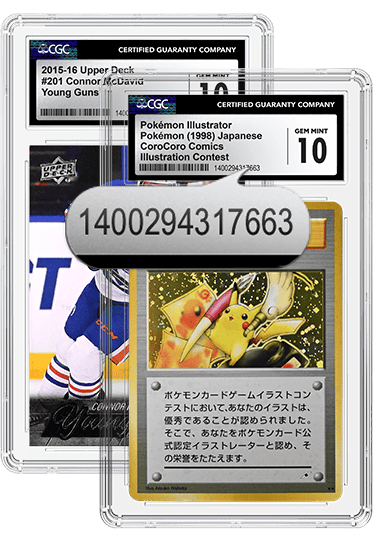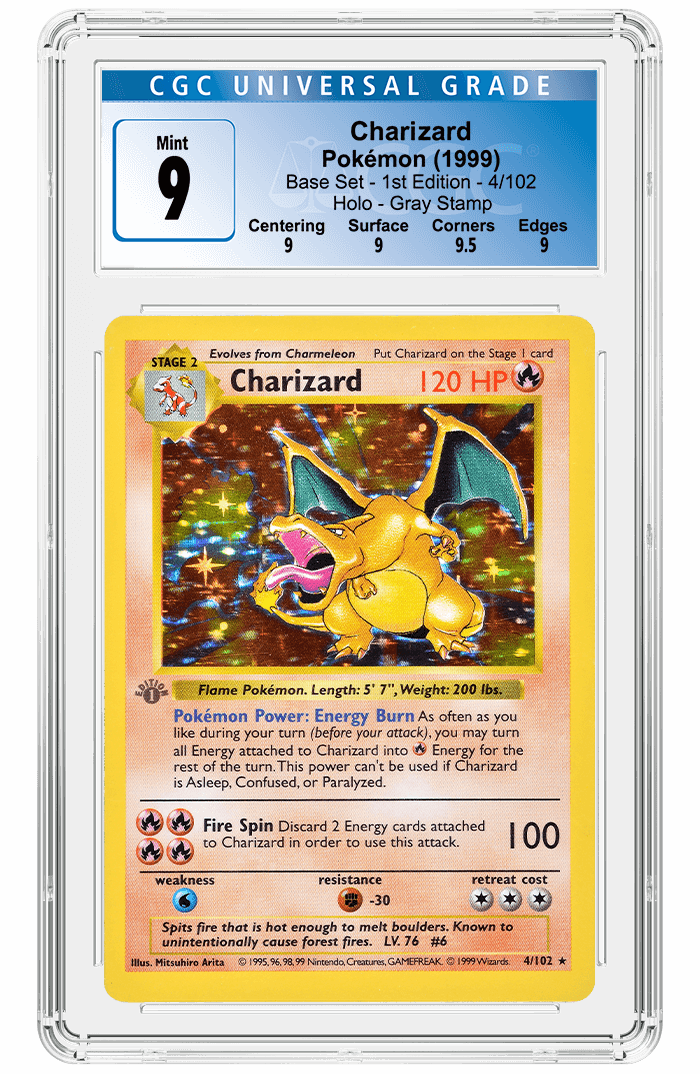Market Guide: Randy Johnson Rookie Cards
Posted on 12/28/2022
Randy Johnson, nicknamed "The Big Unit," is one of the most successful pitchers in MLB history. But are rookie cards from his first season in 1989 worth investing in? Our complete guide will show you the best cards to search for while offering details about their estimated value.
Who Is Randy Johnson?
Randy Johnson began his sports career by splitting his time between basketball and baseball. However, the 6'10" athlete soon decided to focus on baseball, and his 97 mph fastball earned him a reputation as one of the most promising pitchers in the game.
In 1985, the Montreal Expos selected Johnson in the second round of the MLB Draft. After making his major league debut in 1988, the pitcher joined the Seattle Mariners one year later in 1989. It took him a few seasons to hit his stride, but by 1993, Johnson had become one of the best pitchers in the game.
Johnson won countless awards during his 22-season career, and his fastest-ever pitch was recorded at 102 mph. In addition, he led his league in strikeouts nine times and recorded 100 complete games. Further, he won the 2001 World Series during his first stint with the Arizona Diamondbacks. Following his long and illustrious MLB career, Randy Johnson retired after the 2009 season. In 2015, he was inducted into the Baseball Hall of Fame.
What Makes Randy Johnson's Cards So Valuable?
The 1980s is a tricky period for baseball card investors. The decade saw a big boom in sports card collecting, and licenses were handed out to many companies. So, print numbers increased, and the market was saturated. As a result, 1986-1994 is often called the "Junk Wax Era," with many cards commanding little to no value. However, there is a tremendous amount of nostalgia in this era because, for many, it was their introduction to card collecting. The cards of iconic players from the period, especially their rookies, still have the potential to be worth a reasonable amount of money. Randy Johnson is one of those players.
Investment Potential
Investing in cards from the "Junk Wax Era" can be risky, as many of them are unlikely to hold their value. Many Randy Johnson rookie cards are easy to come by and are likely to be sought-after for personal collections rather than investment purposes. When the markets are strong, these cards can occasionally sell for more than they are worth. But investors would be relying more on luck and increased demand for cards, in general, rather than sensible investment decisions.
On the other hand, a select few cards have held their value well over the years and regularly sell for high prices. Usually, these are alternates from sets first released around this time, like Topps Big or Tiffany. The 1989 Fleer Randy Johnson rookie is also likely to be a sound investment because of the print differences.
Best Randy Johnson Rookie Cards for Your Collection
1989 Topps Tiffany #647 Randy Johnson ($2,000)
The standard version of this Topps card, with a basic portrait of Johnson, is valued at $60, even in mint condition. But Topps produced a set of alternates called Tiffany cards between 1984 and 1991. Like their Topps Big sets, this was an attempt to stand out during the "Junk Wax Era." They sold Tiffany cards in complete sets, and you can differentiate them from the regular Topps cards by the glossy front and superior cardstock and print quality. If you can find a 1989 Topps Tiffany Randy Johnson rookie card in perfect condition, it could be worth around $2,000, according to SportsCardsPro.
The regular Topps card is a good choice if you want an affordable Randy Johnson rookie card to add to your collection. It is not a particularly special or valuable card, but it's a good staple for a personal collection. If you want an investment with a higher resale value, look for the Tiffany version of the card.
1989 Fleer #381 Randy Johnson [Marlboro Ad on Scoreboard] ($1,150)
The 1989 Fleer Randy Johnson is perhaps his most exciting rookie card because there are three variations with significant differences in value. The standard card design is not that exciting, as it has a basic image of Johnson posing on the field. But if you look in the background, you can see a billboard over his left shoulder. You should focus on this because the billboard display differs depending on which version of the card you have.
The original card has a Marlboro cigarette ad on the billboard, but Fleer stopped printing this version shortly after its release. The ad is either partially blacked out or completely obscured in later versions. The last version with no Marlboro advert is not particularly expensive. SportsCardsPro gives it an average value of $42, even if it is in mint condition. However, if you find older versions, the value jumps significantly. The value of a card with a partially obscured Marlboro billboard is just under $130 in mint condition. The value of the earliest print with the full billboard ad is $1,150 in mint condition.
1989 Topps Big #287 Randy Johnson ($800)
During the 1980s, Topps was at the forefront of the card collecting industry, and they were always looking for new ways to keep their cards interesting in an increasingly busy market. In 1988, they released the Topps Big brand, a line of larger cards with a horizontal layout and bigger images. Although a bit of a novelty at the time, they never really took off. Topps discontinued this set after three years, increasing their scarcity.
The Randy Johnson rookie card from this set features a large portrait alongside an action shot of him pitching. If you can find a mint condition example, it could be worth as much as $800, according to SportsCardsPro, as long as the condition is perfect. However, the value of a near-mint card is around $80.
Sales data from PriceGuide.Cards shows that the average value in 2004 was $50 for a graded card. By 2018, it was almost $120, but it dipped to $50 again the following year. So, even though this card can sell for a lot and holds its value well, it's not necessarily going to double in price over a short period. Investing in a mint condition card in the long-term may be a sensible move, but look elsewhere if you want a short-term investment.
1989 Upper Deck #25 Randy Johnson ($100)
Upper Deck sets have always been a favorite among collectors because they have excellent images, and the quality surpassed most other cards. 1989 was the first year that Upper Deck cards were released, so cards from this set are even more attractive to collectors and investors.
It has the classic, simplistic Upper Deck design from this period, with most of the card taken up by the image. The slight smirk in the photo shows Randy's personality, which makes this a fun card for Johnson fans.
This is a relatively cheap card with an average value of $100, according to SportsCardsPro. If the condition depreciates though, the value drops below $10. In the past, it has regularly sold for $300-500, so if you can pick it up for $100 or less, it may be a good investment. Either way, an Upper Deck rookie is always an excellent addition to your Randy Johnson collection.
1989 Donruss Rated Rookie #42 Randy Johnson ($55)
The Donruss Rated Rookie sets started in 1984 and soon became a fan favorite because of their vibrant border designs and iconic logo. The purple and black borders on this rookie card are particularly notable, especially considering many cards from this era have basic, uninspiring designs. Rated Rookie cards also aimed to predict which players would become superstars in the future. In instances when they got it right, like Randy Johnson, the cards may be more interesting to collectors.
You can find this iconic card for a very reasonable price. SportsCardsPro values a pristine card at $55, but in the right climate, this card could sell for quite a lot more than that. For example, in 2015, one sold for $554.44. Generally, it holds its value well, but it isn't the most sought-after card out there. If you are lucky, you may be able to sell it for a significant amount, but it may have more value in a personal collection.
1989 Score #645 Randy Johnson ($37)
Score was another set that was new during Randy Johnson's rookie season. It was first released the previous year in 1988 and ran for ten years. Score is not a particularly popular set. That said, the Randy Johnson rookie card from the 1989 set has a very dynamic image with him pitching in his powder blue Expos uniform. The striking image and the bold rookie banner across the top make it very recognizable, even if it is not the most valuable.
SportsCardsPro lists the average mint condition price at $37. So, if you want an excellent Randy Johnson rookie card in perfect condition without a hefty price tag, this Score card is ideal. But if you want a card that will net you a lot of money when you sell it, look elsewhere.
Where Can I Purchase Randy Johnson Rookie Cards?
Knowing what Randy Johnson rookie cards to look for is the first step, but now you need to find them. There are several places to buy his rookie cards, including hobby stores or stalls at conventions. Finding them on online auction sites is an easier and quick option to track down specific cards as well. You can also monitor the price more effectively online. These are the best sites to try:
- eBay
- PWCC Marketplace
- Goldin Auctions
- Lelands
How Are Randy Johnson Rookie Cards Graded?
Grading is important when buying and selling cards. The grade demonstrates the condition of the card, which drastically impacts its value. If you sell an ungraded card, you won't be able to get a reasonable price for it. However, you get a certificate to guarantee the condition and quality of the card when a professional company grades the card. It will also be encased in a high-quality plastic slab to protect it. The ultrasonic-welded slab provides superior protection, and is also designed to give crystal clear optics, so the colors and features of the card are displayed perfectly.
Card grading companies focus on several factors:
- The overall appearance of the card
- The centering of the image and the print quality
- Any visible wear and tear around the edges
- The sharpness of the corners
Scores from each category give a final grade for the card. If a card is graded at the highest level, which is quite rare, the value of the card can increase significantly.
Conclusion
Randy Johnson is an excellent player, but his card values may suffer from oversaturation. This is good news for personal collections, but if you are a serious investor, you need to focus your efforts on a few specific cards from distinct sets.
Stay Informed
Want news like this delivered to your inbox once a month? Subscribe to the free CGC eNewsletter today!

